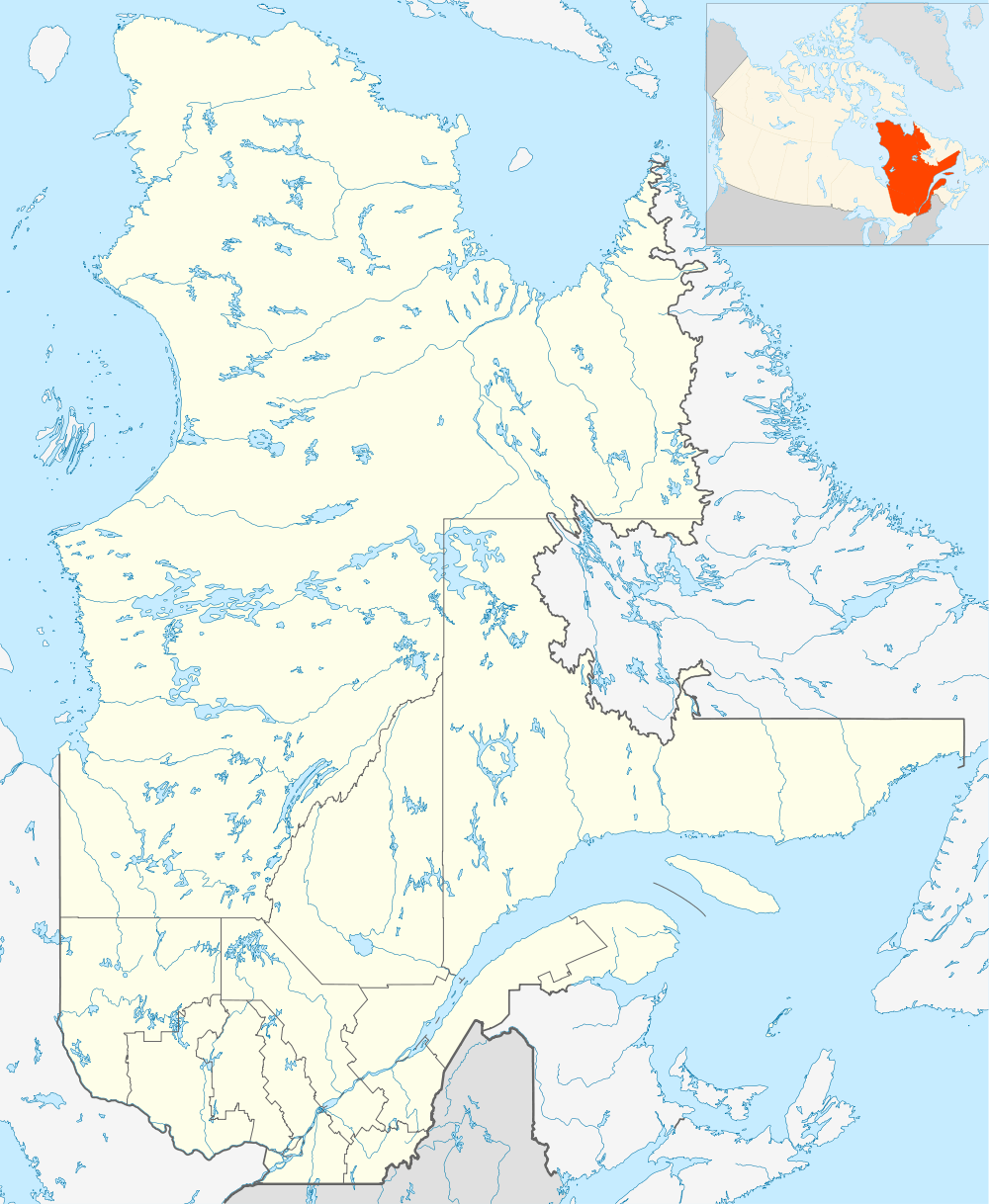Puvirnituq
| Puvirnituq ᐳᕕᕐᓂᑐᖅ | |
|---|---|
| Northern village municipality | |
|
| |
 Puvirnituq | |
| Coordinates: 60°02′N 77°17′W / 60.033°N 77.283°WCoordinates: 60°02′N 77°17′W / 60.033°N 77.283°W[1] | |
| Country |
|
| Province |
|
| Region | Nord-du-Québec |
| TE | Kativik |
| Constituted | September 2, 1989 |
| Government[2] | |
| • Mayor | Levi Amarualik |
| • Federal riding | Abitibi—Baie-James—Nunavik—Eeyou |
| • Prov. riding | Ungava |
| Area[2][3] | |
| • Total | 111.50 km2 (43.05 sq mi) |
| • Land | 85.74 km2 (33.10 sq mi) |
| Population (2011)[3] | |
| • Total | 1,692 |
| • Density | 19.7/km2 (51/sq mi) |
| • Change (2006–11) |
|
| • Dwellings | 489 |
| Time zone | EST (UTC−5) |
| • Summer (DST) | EDT (UTC−4) |
| Postal code(s) | J0M 1P0 |
| Area code(s) | 819 |
| Website |
www |
Puvirnituq (Inuktitut: ᐳᕕᕐᓂᑐᖅ) is a northern village (Inuit community) in Nunavik on the Povungnituk River near its mouth on the Hudson Bay in northern Quebec, Canada. Its population was 1,692 as of the Canada 2011 Census.
Unlike most other northern villages in Nunavik, it has no Inuit reserved land of the same name associated with it.
The name means "Place where there is a smell of rotten meat". This unusual name may have originated from either one of these events (occurring a long time ago):
- A herd of caribou was swept away by the Povungnituk River while attempting to cross it and washed ashore near the current village site where the decomposing bodies began giving off a staunch smell.
- An epidemic killed off most of the area's residents to the point where there were not enough people to bury the dead, allowing the exposed bodies to decompose, giving off a putrid smell.
Puvirnituq is the aviation hub of the Hudson Bay coast. Puvirnituq Airport handles scheduled flights to and from all other Hudson Bay coastal communities in Quebec, Montreal, and Ottawa. It is not accessible by road.
History
| Wikimedia Commons has media related to Puvirnituq. |
In 1921, the Hudson's Bay Company established a trading post here, known as Povungnituk and often shortened to Pov. This attracted the settlement of Inuit living in the region. In 1951, the HBC opened a general store. The closure of HBC stores in other nearby villages led to an influx of Inuit to Puvirnituq.
A Catholic mission was founded in 1956, which encouraged the residents to form the Carvers Association of Povungnituk two years later. It later became the Co-operative Association of Povungnituk and was instrumental in assisting, developing, and marketing Inuit art. Its success inspired other Inuit communities to form similar cooperatives, most of which now make up the Federation of Co-operatives of Northern Quebec.
References
External links
- Nunavik Tourism, Puvirnituq website
- Watch My Village in Nunavik, a documentary about life in the community